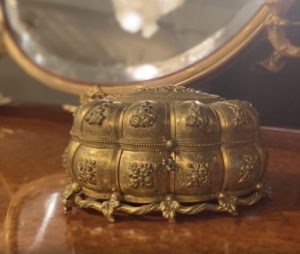Édouard Lièvre
A Neo Renaissance Walnut Cabinet, Attributed to Édouard Lièvre and Paul Sormani
£54,000
A Neo Renaissance Gilt-Bronze and American Walnut Cabinet (or Credence) Designed By Edouard Lievre, Attributed To Paul Sormani. In the neo-Renaissance...
Dimensions
Height: 181 cm (72 in)Width: 150 cm (60 in)
Depth: 57 cm (23 in)
Description
A Neo Renaissance Gilt-Bronze and American Walnut Cabinet (or Credence)
Designed By Edouard Lievre, Attributed To Paul Sormani.
In the neo-Renaissance style, the spreading pediment with Vitruvian scroll-fitted frieze, centered by an urn and flanked by cartouches, the quarter panelled doors with pierced rinceaux reserves and centred by portrait relief roundels of King Charles VII of France ‘The Victorious’ (1403-1461) and Agnès Sorel (1422-1450), each opening to an adjustable shelf, flanking a statuette of ‘The Belvedere Hermes’, the base fronted by five open arches centred by a pair of columns with Corinthian capitals, above a spreading platform, on bun feet.
71 1⁄4 in. (181 cm.) high; 59 in. (150 cm.) wide; 23 1⁄2 in. (57 cm.) deep
Exhibited
Paris, Galerie Roxane Rodriguez, Optima propagare Edouard Lièvre: Créateur de meuble & objets d’art, 16 September – 16 October 2004.
This cabinet, ‘Crédence en noyer enrichie de bronzes’, is Lièvre’s defining piece in the Renaissance style. Its importance is underlined by it being retained in Lièvre’s own collection until the sale of his personal property at Hôtel Drouot in March 1887 following his death. It recalls Franco-Flemish cabinets-on-stands of the early 17th century such as the ‘Marie de Medici cabinet’ in the V & A (W.64:1 to 3-1977), which Lièvre might have seen at Mentmore Towers, Buckinghamshire, where it was from circa 1855 in the collection of Baron Mayer Amschel de Rothschild (d. 1874).
Part of Lièvre’s genius was his flair for combining historically accurate ornament to create new designs. As evidenced by the present cabinet, his skill was in maintaining the correct proportions and symmetry. With subtle hints and acknowledgement to past masters, Lièvre creates something both quite new, yet in homage to the antique. This historicism is evident to the crédence not just in its form, but also in the use of a statuette of Antinous, a reduction after the Belvedere Hermes. A favourite of the Emperor Hadrian, the antique original takes a prominent position in the Belvedere of the Museo Pio-Clementino (Vatican Collection). The portrait plaques depict Charles VII and his favourite mistress Agnès Sorel, chosen to represent love.
The cabinetry can be attributed to the Parisian ébéniste Paul Sormani owing to the superb quality of its construction, but more specifically with reference to a smaller, and albeit overall less accomplished, cabinet signed by Sormani and fronted with an identical single portrait plaque of Agnès Sorel (A Private Collection Volume I, Sotheby’s, New York, 26 October 2006, lot 187).
Also compare a mirror ‘Psyché de Sarah Bernhardt’ (Connaissance des Arts, N° 228, Paris, 2004, S. 28 ff. p. 4-5) and a cabinet-on- stand with identical figure of Antinous (opposed by Diana) sold Sotheby’s, New York, 16 November 2011, lot 239.
Paul Sormani (1817-1877)
Born in Venice in 1817, Paul Sormani (1817-1877), was a Parisian maker of fine ‘meubles de luxe’. His work was described in the catalogue of the 1867 Exposition Universelle as: ‘toute sa production révèle une qualité d’exécution de tout premier ordre’ (all of his production reveals a quality of execution all of the first order’).
Sormani exhibited at the International Exhibitions in Paris in 1849, 1855, 1867, 1878 and 1900, and in London in 1862, winning numerous medals.
Paul Sormani established the firm in 1847 at 7 Cimetière Saint-Nicolas in Paris, moving in 1854 to 114 rue du Temple, and in 1867 to 10 rue Charlot.
After his death in 1877 Sormani’s son Paul-Charles took over the business that later moved to 134 Boulevard Haussmann.
It can be difficult to date Sormani’s work, as the firm produced furniture for nearly ninety years. However, when Paul Sormani died in 1877, his wife and son took over the business and from this date onwards pieces are normally signed ‘Veuve Sormani & Fils’.
Bibliography:
Mestdagh, Camille & Lécoules, Pierre. L’Ameublement d’art français : 1850-1900, Les Editions de l’Amateur, (Paris), 2010.
Meyer, Jonathan. Great Exhibitions – London, New York, Paris, Philadelphia, 1851-1900, Antique Collectors’ Club, (Woodbridge, UK), 2006.
Ledoux – Lebard, Denise. Les Ébénistes du XIXe siècle, Les Editions de L’Amateur, (Paris), 1984; pp. 583-588.
Date
Circa 1870
Origin
France
Édouard Lièvre (1828-1886) was one of the most talented draughtsmen and prolific industrial designers of the second half of the 19th century. He was archetypal of a new class of artists in the 19th century who rose above the craftsmen guild system to become industrial designers, free to fully express their genius across the arts. Like his illustrious contemporaries, such as Carrier-Belleuse, Constant Sévin, Froment-Meurice and Emile Reiber, Lièvre sought to express his art through multiple mediums – he learnt printing, drawing, gouache, metalwork, sculpture and ébénisterie. Embodying the industrial aspirations of his day, he utilised the most advanced technology to realise his designs, of which his ‘sino-japonais’ and neo renaissance creations, are époque defining.
A polymath, as a child Lièvre was taught lithographic printing in Nancy before being apprenticed to a foundry where he learnt bronze casting and draughtsmanship. Arriving in Paris penniless, to earn a living he painted portraits and made models for manufacturer’s bronzes, and studied watercolour painting under Théodore Valerio (d. 1879). Trips to Belgium inspired a fascination for the Flemish baroque painter Jacob Jordaens, and further training followed in Thomas Couture’s atelier. Although Lièvre exhibited at the Salon in the 1860s, painting was not his preferred métier.
Lièvre found his vocation in producing two important publications which contributed to a reawakening of antiquarian interest in Second Empire France. The first being a catalogue for the Collection Sauvageot, with text by Alexandre Sauzay and illustrations by Édouard Lièvre, published in 1863. The Charles Sauvageot Collection of objets d’art was donated to the Musée du Louvre in 1856. The second title, ‘Les Collections célèbres d’oeuvres d’art dessinées et gravées d’apres les originaux par Edouard Lièvre’, published in 1866, was a catalogue of celebrated works of art from the Gothic to Louis XVI periods including pieces again from the Sauvageot bequest, bust also works belonging to Baron James de Rothschild, the Comte de Nieuwerkerke and the Marquess of Hertford, with ‘texts historiques’ by leading academicians including Henry Cole, Albert Jacquemart and Paul Manz. These publications show the historical breadth of Lièvre’s appreciation of ornament and the high regard in which he was held by the art elite of the day. Illustrating these publications allowed Lièvre to travel to French museums and to visit collections in England, and the experience honed his eye and furthered his learned appreciation of ornament. Such an assiduous contemplation of beautiful things inspired Lièvre to make his own designs and produce his own works of art. He saw furniture in particular as the more glorious art and of central importance to the home. Often assisted by his brother Justin, he firstly produced works of art for his own apartment, seeking out the best craftsmen to execute his designs for bronzes, ceramics, fabrics and luxury furniture of great ingenuity and taste. Lièvre was then engaged by these craftsmen to design works for their firms, including the ébéniste Paul Sormani, the silversmith Christofle, as well as marchands merciers such as Escalier de Cristal, and bronziers such as Maison Marnyhac, and France’s leading bronze fondeur, Ferdinand Barbedienne. Additionally, following in the tradition of marchands-merciers, Lièvre also began to extend his practice by designing furniture and objects for important private clients, which were then executed by these prestigious firms. These clients included Sarah Bernhardt (for whom he designed a monumental cheval mirror), the courtesan Louise-Emilie Valtesse de la Bigne (for whom he designed an impressive bed, now in the Musée des Arts Décoratifs, inv. DO 1981-19), and Édouard Detaille, the famous military artist (for whom Lièvre supplied a console d’apparat).
‘Dans la composition du meuble, il emprunte le point de départ aux modèles consacrés. Il songe à l’art oriental Renaissance, au style Louis XVI; mais il ne les répète point. […] il ajoute sa pensée à celle des créateurs prim pins en plus soucieux de la grâce sévère ou souriante, il parvient à exécuter des œuvres d’art qui ont un cachet meuble d’Édouard Lièvre est toujours conçu en raison de l’usage auquel il est destiné et du rôle qu’il doit jouer environnant. Bien qu’il soit d’un très riche travail, il ne reçoit que l’ornement qu’il comporte, […] Le bois y e des mains savantes, le bronze s’embellit de ciselures délicates ou fières et, si soigné qu’il soit, le détail ne parle haut dans l’ensemble. Enfin, l’exécution toujours surveillée avec un soin jaloux, a cette loyauté qu’on réclamat chef-d’œuvre que devait accomplir le compagnon ambitieux d’obtenir son brevet de maîtrise.’
P. Eudel, L’Hôtel Drouot et la Curiosité en 1886-1887, Paris, 1888, p. 118
Bibliography:
Catalogue des Meubles d’Art de la Succession de feu de M. Edouard Lièvre, 21-24 March 1887, no. 16.
P. Eudel, L’Hôtel Drouot et la Curiosité en 1886-1887, Paris, 1888.
‘Édouard Lièvre’, Connaissance des Arts, N° 228, Paris 2004.
Optima propagare Edouard Lièvre: Créateur de meuble & objets d’art, Galerie Roxane Rodriguez, Paris, 2004.
Annick et Didier Masseau, L’Escalier de Cristal Le luxe à Paris 1809-1923, Paris, 2021, p. 110-117.
Succession de Feu Edouard Lièvre, Paris, Hôtel Drouot, 21-24 March 1887, no. 16 (3,500 francs).
The Collection of M. Leprince.
Private Collection.
Catalogue des Meubles d’Art de la Succession de feu de M. Edouard Lièvre, 21-24 March 1887, no. 16.
P. Eudel, L’Hôtel Drouot et la Curiosité en 1886-1887, Paris, 1888, p. 120: ‘Credence en noyer enrichie de bronzes’.
‘Édouard Lièvre’, Connaissance des Arts, N° 228, Paris 2004, S. 28 ff.
Optima propagare Edouard Lièvre: Créateur de meuble & objets d’art, Galerie Roxane Rodriguez, Paris, 2004, pp. 32-33.
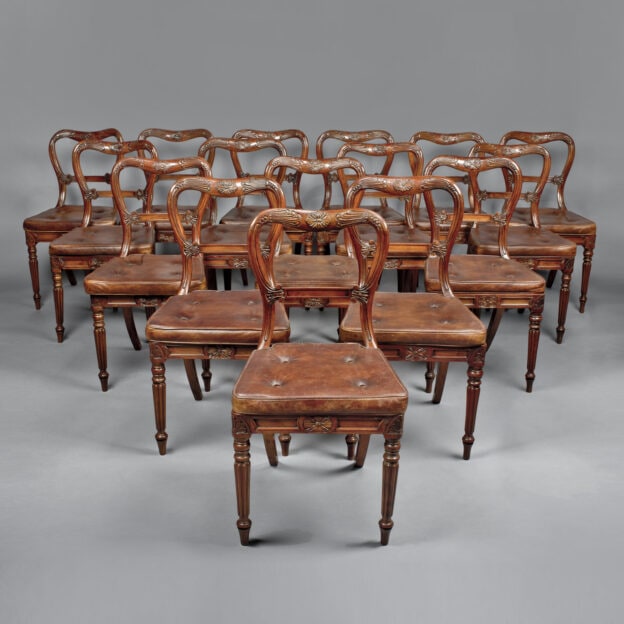




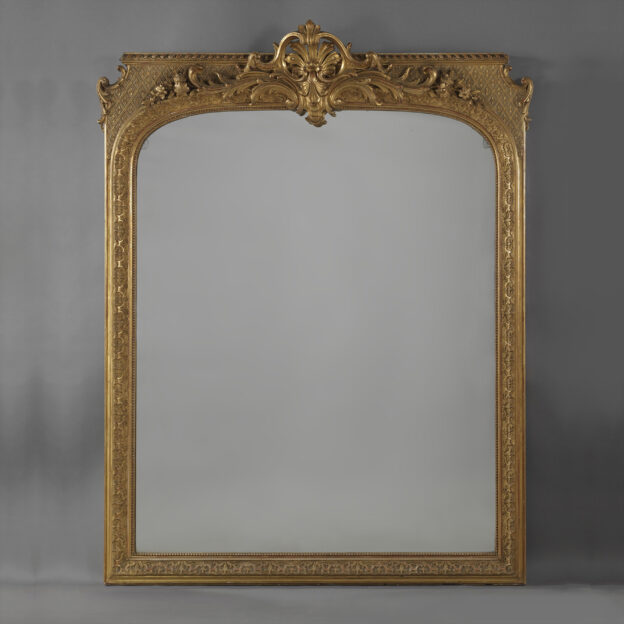
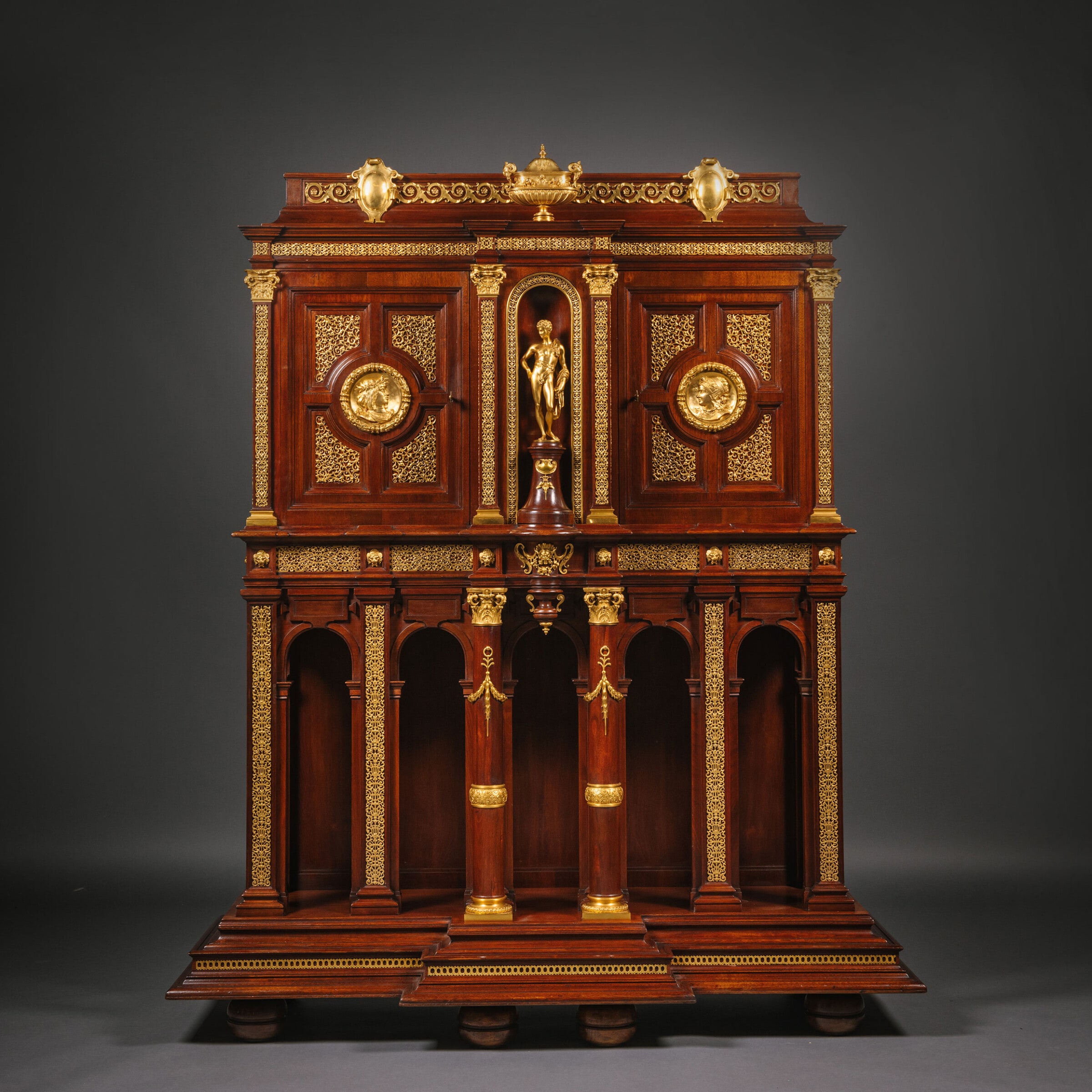
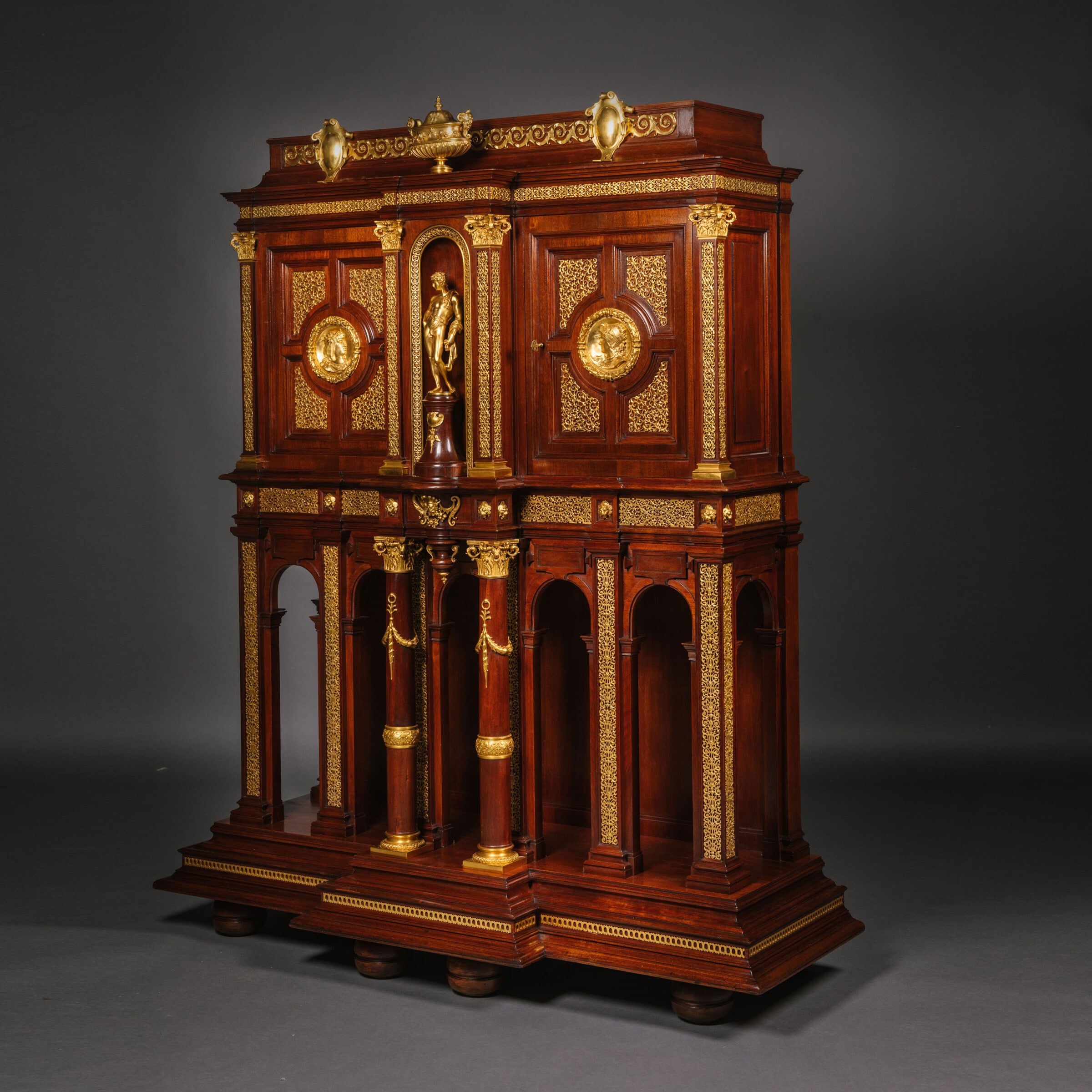
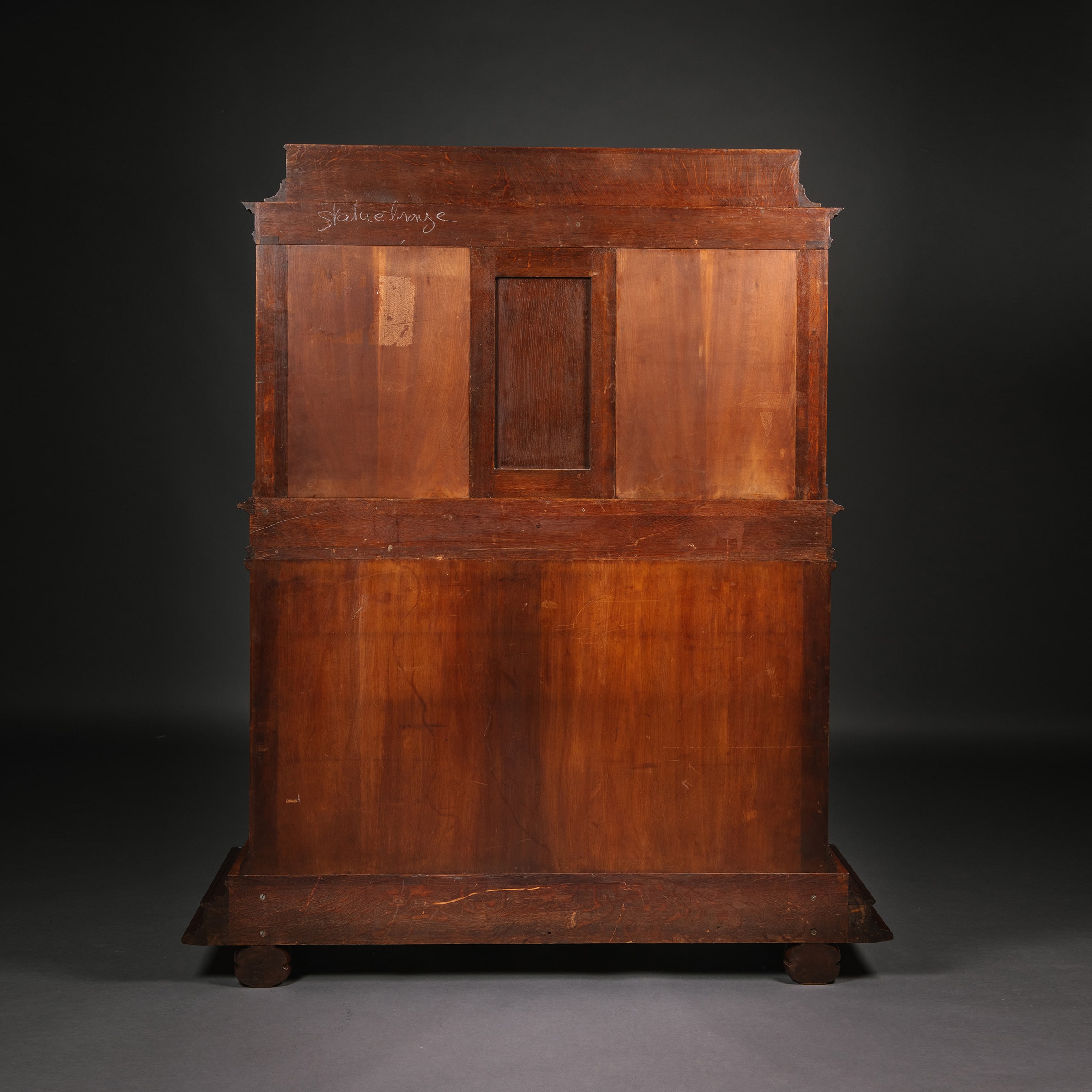
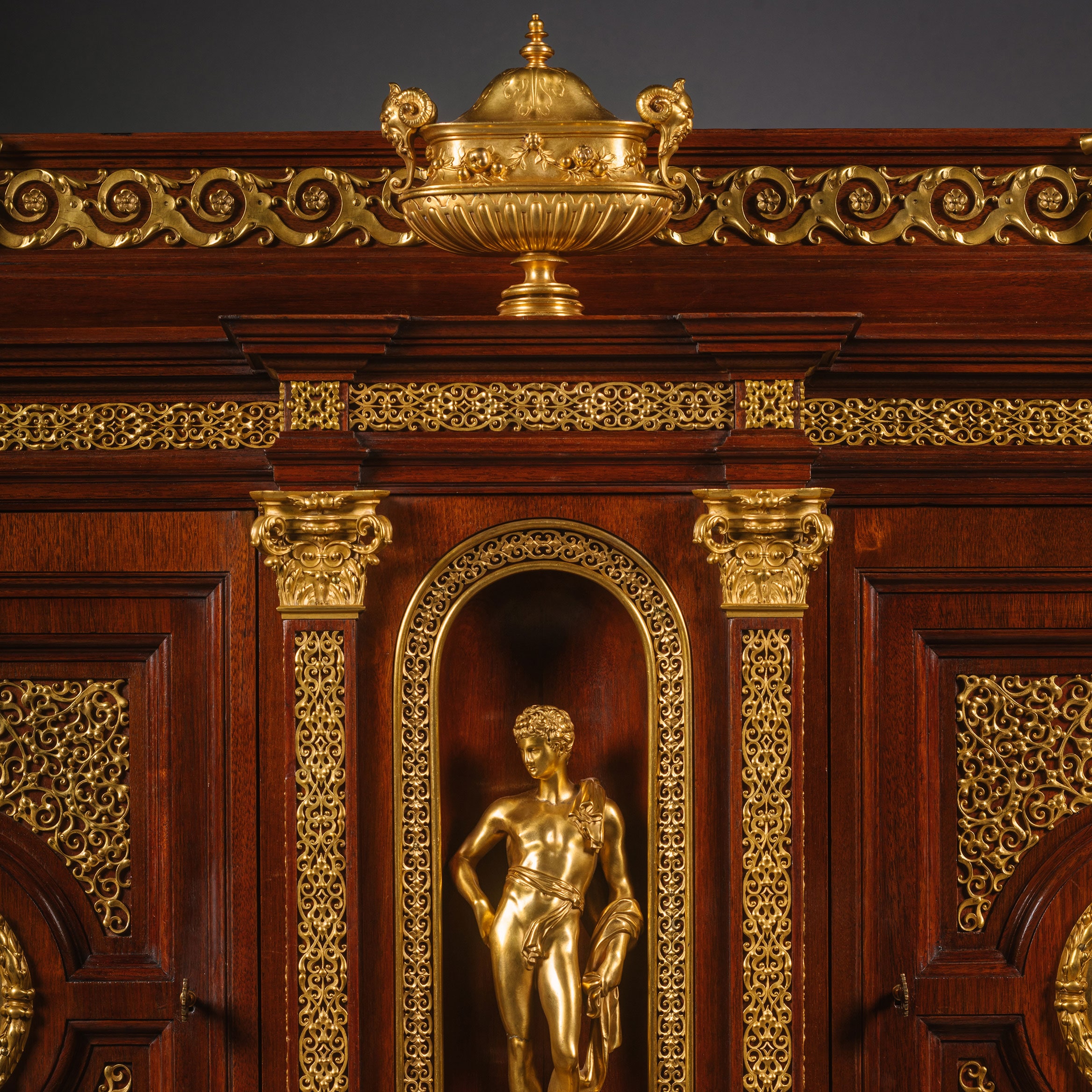
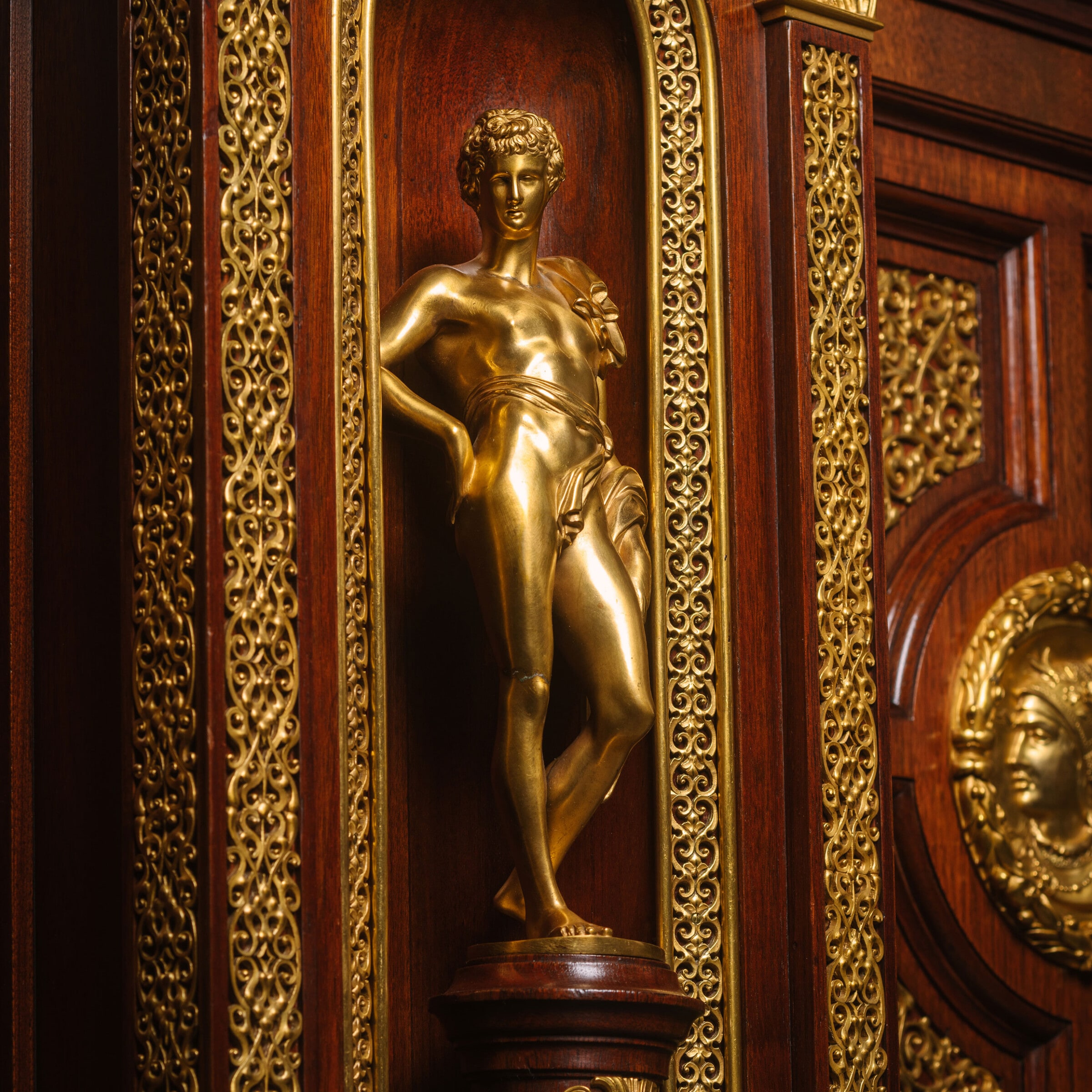

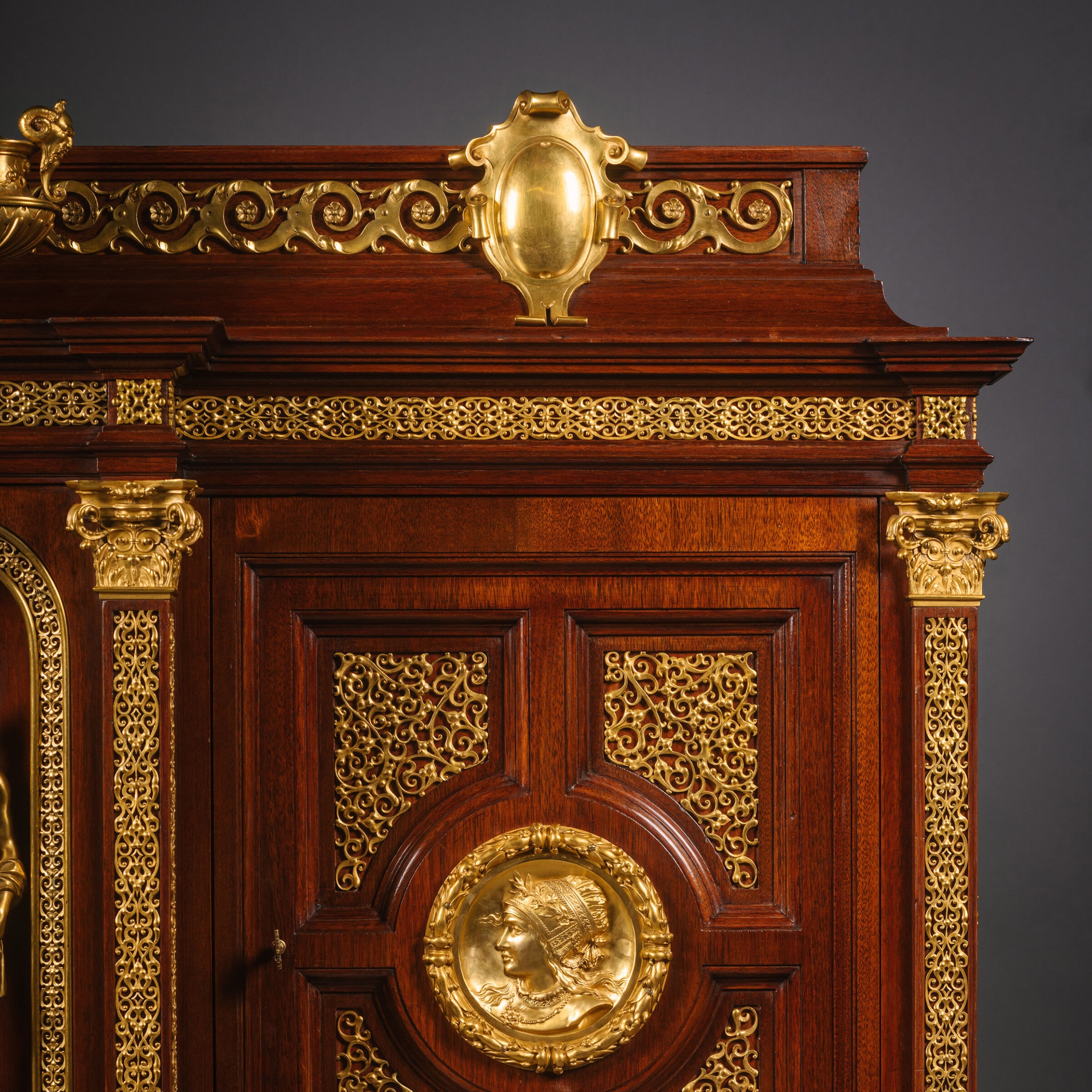
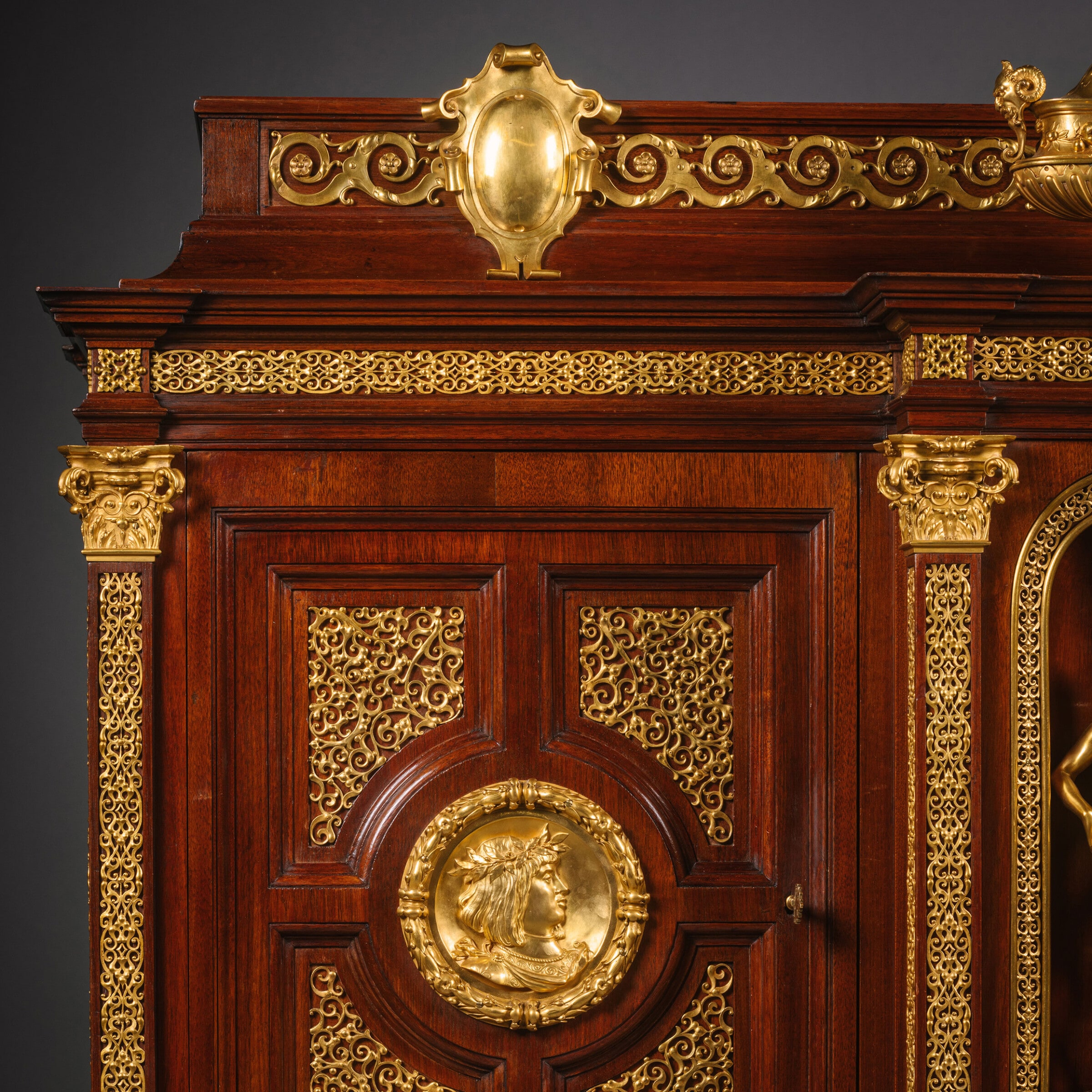
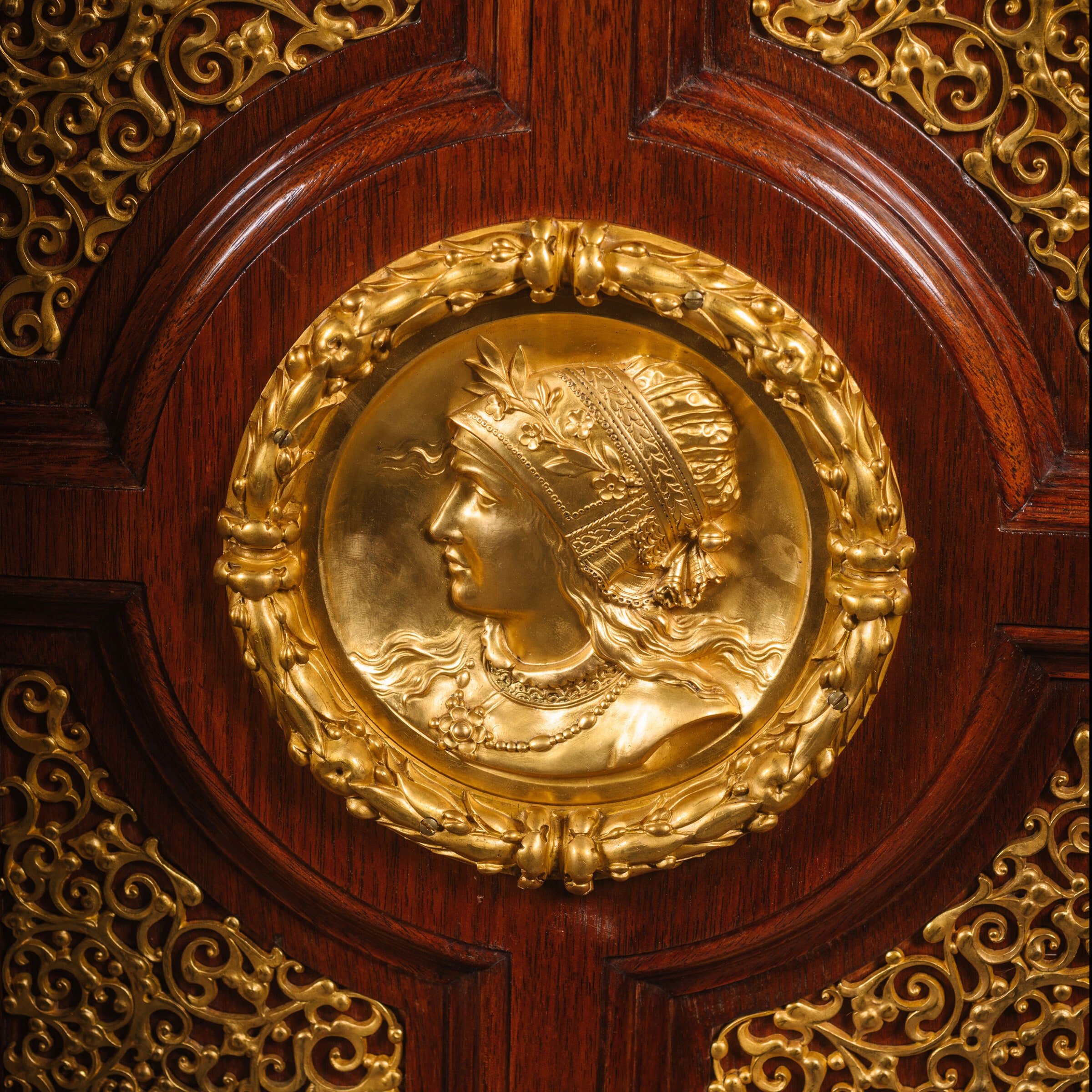
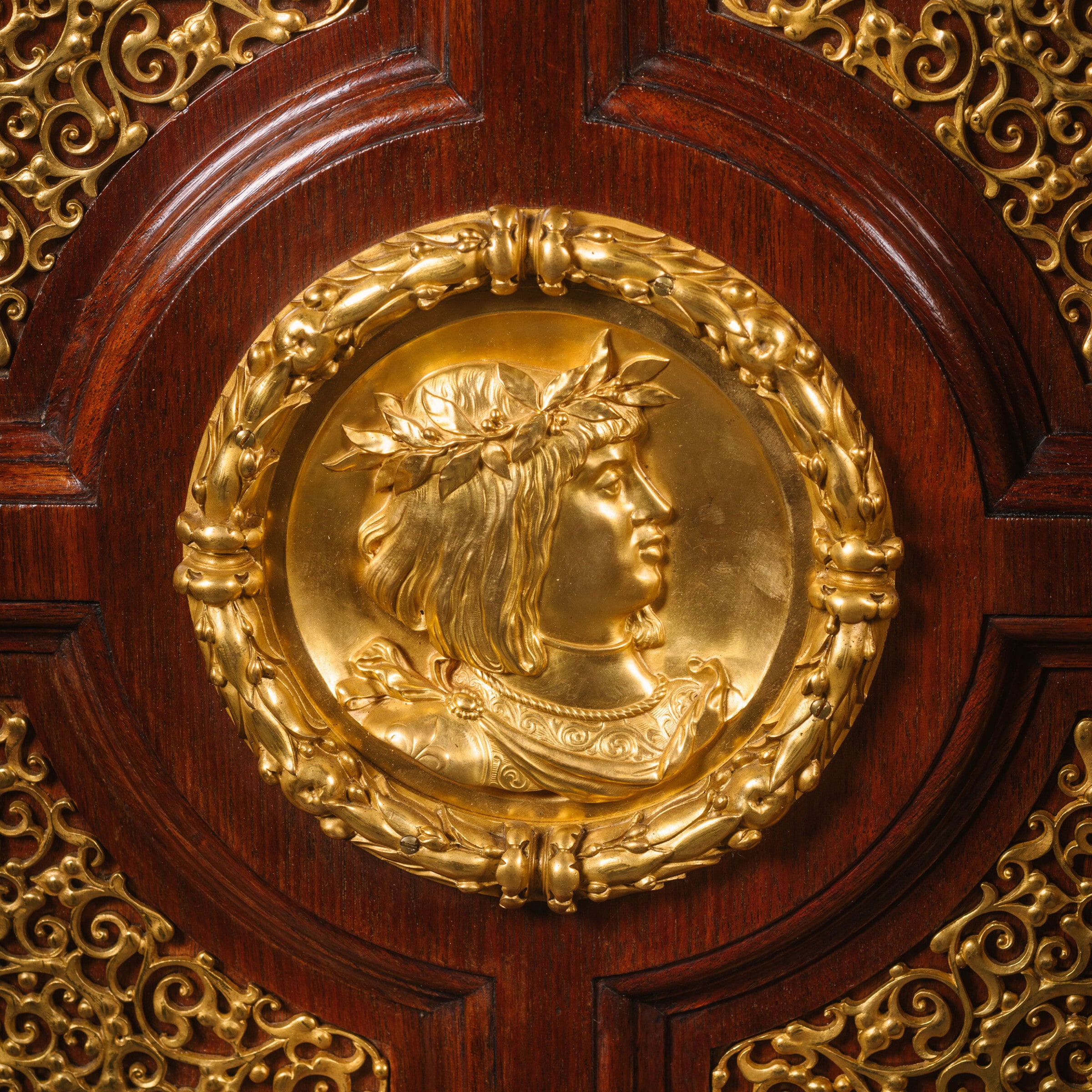

 Print
Print